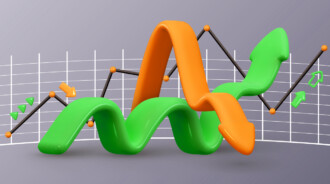

Prices for stocks are never constant. They are continually growing or dropping depending on the buyers’ and sellers’ supply and demand for that particular stock. Buyers bid on stocks by proposing an amount they are prepared to pay for them, also referred to as the bidding price. Sellers establish the asking value of a stock at a cost for which they are ready to sell their shares. Both parties reach a price that benefits both of them since the stock exchanges match the rates. The last trading price, or tipping point, is the price at which a stock sale is completed.
What is LTP?
The fluctuating values of stocks across periods are the basis of the entire stock market concept. The meaning Last Traded Price, which is the full form of LTP, is what is used to describe those products exchanged in the share market, the latest price at which the stock was purchased or sold. As the LTP of stock varies throughout the course of its existence, its variations are where its significance may be found.
How is LTP calculated?
LTP is referred to as a necessity for products whose price is assessed by stock traders (consumers) in an exchange, where both the seller and the buyer are regarded as consumers because they are stock market traders. When a trader wants to sell someone’s shares, they will register a sell order for the targeted price (based on the share’s performance and current price). The transaction is executed, and the cost for which the stock was decided to sell will become the latest traded price when a purchase order from another dealer matches this sell order.
Trading Volume
The share market’s LTP is heavily influenced by trading volume. It generally refers to how much of a particular stock is traded at any single point. The share market’s LTP, along with the stock’s price volatility, are both impacted by and depend on the trading volume. A stock with a greater trading volume indicates that the number of buyers exceeds the number of sellers than a stock with a lower trading volume, which suggests that fewer orders are being filled. Any transaction over the stock’s price range will significantly affect a stock’s volatility.

Importance of LTP
LTP acts as a base price for traders to reference their offers and/or bidding prices of shares in the stock market. Among the most crucial informational pieces, a trader has to know is, indeed, the LTP for the share price of a particular share. Market depth tables are accessible on many trading platforms and give access to a record of the most recent prices for which the share was traded. This knowledge of the various LTPs of stocks can help you figure out trends in a stock’s price as well as the LTP within that stock exchange to trade in accordance with those trends.
What is the difference between LTP and ATP in stocks?
To understand the difference between what LTP and ATP are in the stock market, it is essential first to understand that ATP is the market’s average traded price of a stock. In plain English, it is the average price that investors pay for a share over a given period of time. It is determined by multiplying the share price by the daily average number of shares traded. It is crucial to understand the ballpark price that investors paid for one share of that company. This price determines how the stocks respond during market ups and downs. LTP, on the other hand, is indicative of what direction the stock price may take on the subsequent day since it represents the closing price. LTP is a representative indicator of the price movement in real-time for a stock, showing what trends may follow from the demonstrated history of prior days. As a seasoned trader, you should know the difference between such acronyms at the back of your hand because of how much difference they can make in the conversations and trades you have.
General Tips About the Market
One can never be sure whether a stock’s closing price would exactly correspond to its last trade price or the LTP. However, in technical terms, a stock’s closing price and the last traded price are identical, making them the same. Nevertheless, trading volumes are essential, particularly in the last hour of a trading day. In the final minutes of the market before its closure for the day, stocks are frequently heavily traded. Because of the volume, orders are often filled moments afterward when the market has closed. As a consequence, while the closing price takes orders entered before the market actually closed into consideration, it does not apply to orders completed after the market closed.
Conclusion
Please note that this is not financial advice on trading or managing your portfolios. Instead, the article aims to explain a critical aspect of trading covered by the Last Trade Price (LTP) concept.
To be an intelligent trader, you must read up more on financial concepts and the different aspects of trading and then enter the market. Perhaps the most important tip for being a pro trader is staying up to date about the different markets you operate in. Try to read up on different news sources every day and keep updating your knowledge regarding different strategies.







